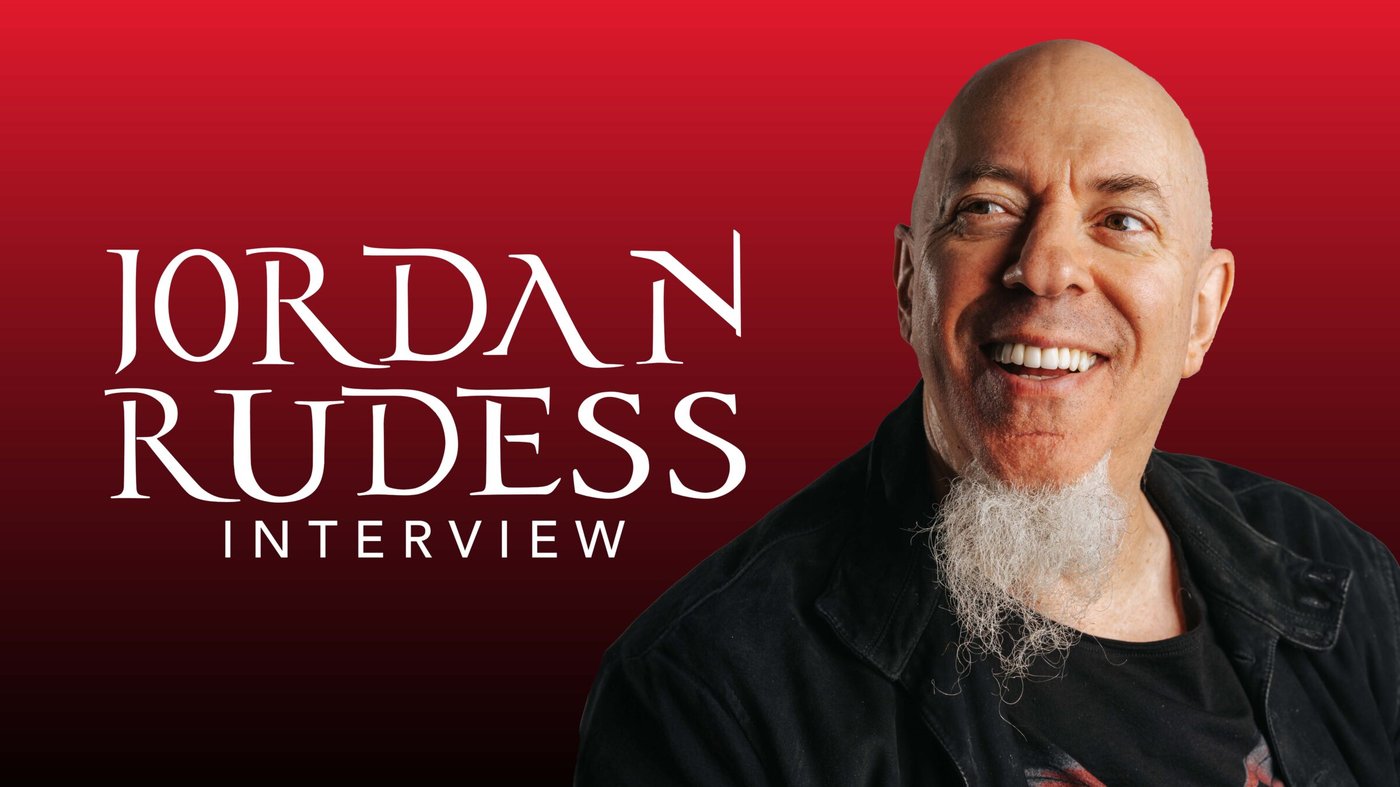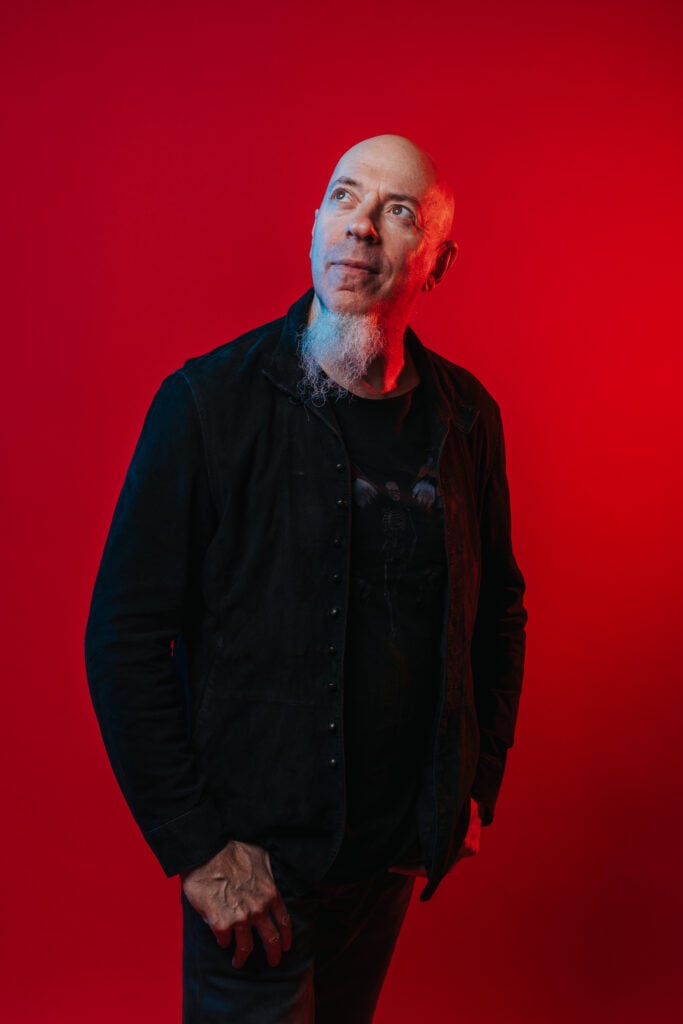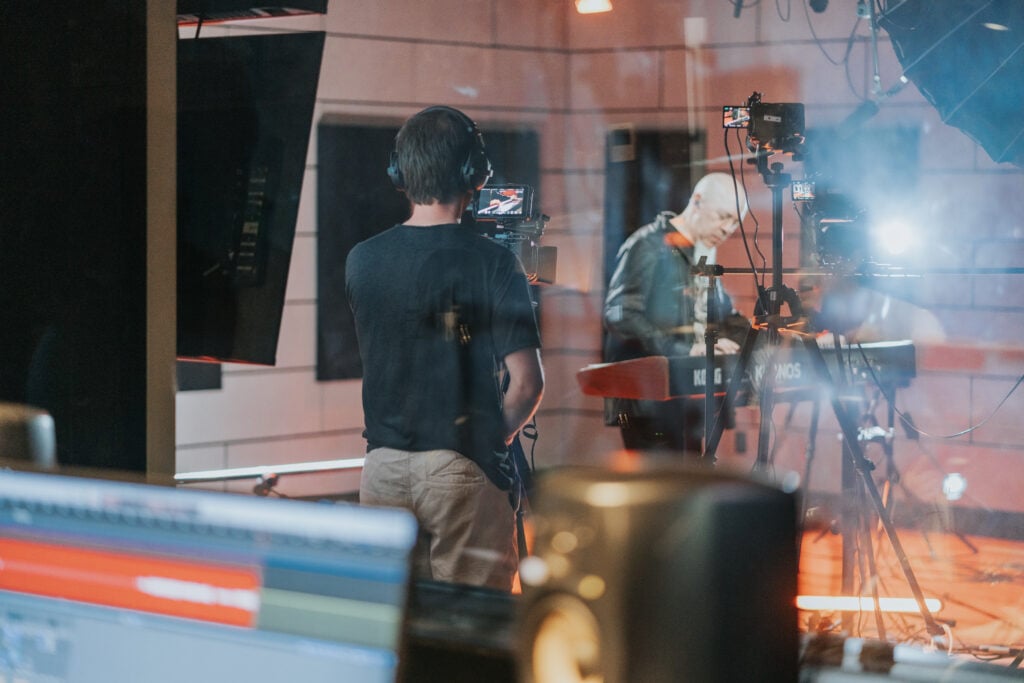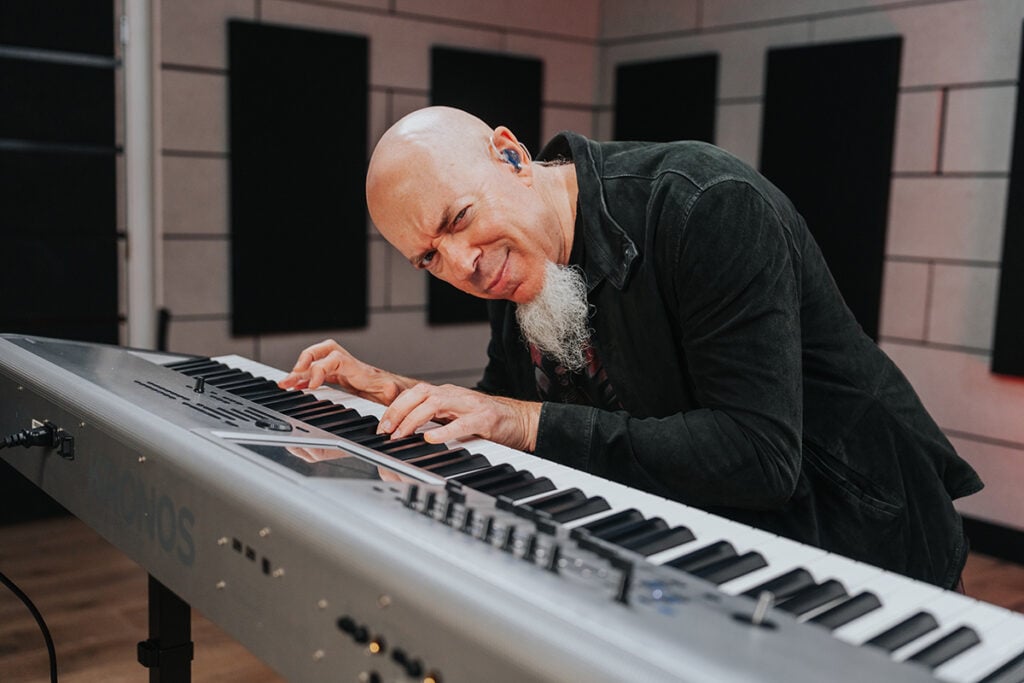
Voted Best Keyboardist of All Time by Music Radar, Jordan Rudess is best known as the Juilliard-educated keyboard virtuoso of Dream Theater. But he’s not just a rock star; he’s a passionate teacher too.
In this (edited and condensed) interview, we visit a side of the Wizard few have met: Jordan Rudess the piano teacher! Together, we discuss better ways to approach practice, the importance of headspace, and what piano education needs more of.
Table of Contents:
Get exclusive interviews, fascinating articles, and inspiring lessons delivered straight to your inbox.
Teaching is very important to me. I feel that, as you mentioned, there are many great players and most of them probably can’t teach effectively. It takes a combination of skills to impart wisdom upon somebody! And when you’re doing a course like mine, you’re putting something out there that will be watched by all kinds of people from different places—maybe even coming into English from different points and trying to understand what I’m saying at different levels. So, I appreciate being someone who can translate, get ideas across, and be effective in that way.
I feel like I have a good starting point and that comes from, well, having had amazing training myself. I’m so lucky that my piano training comes from probably the best schools in the time that we’re living. I went to Juilliard, but I also studied with Catherine Parker, who is the student of Rosina Lhévinne, who is probably the most famous piano teacher of the last 100 years. So, I got some really good information there that is the foundation for everything I do, no matter what style I play.

Having that as my personal groundwork gives me a head start towards teaching. But there’s more to it than that. I also appreciate when somebody can explain something simply. A lot of times when people know a lot about their topic, they tend to make it too intellectual, too complicated, or too academic. That’s where, I think, a lot of professionals go wrong. I feel that when you’re showing somebody something, you want to allow them the comfort of: here it is, it’s not rocket science, and we’re all in this together.
And there’s a simple way to present things, even if it’s really complicated. Like, I can play something crazy with my left hand, talk while I’m doing it, and play something else with my right. And I can certainly go into some amazing, fantastical explanation of how it’s done. But the reality is hey, I’m a person too, and I figured it out. And this is a pathway towards that goal for somebody else, step by step.
What’s not easy is that, if you really want to get good at any of these physical instruments (like piano, violin, guitar, trombone…) it takes practice and there’s no avoiding that. But if you’re willing to go on the journey—if you’re willing to sit with me in the Pianote course—then you’ll get somewhere because we do this beautiful, step-by-step procedure.
I’ve had a lot of experience sharing my thoughts about music and what I’ve learned throughout the years. It’s something that’s comfortable for me. And I really value when I feel from the person I’m teaching that it has some impact.
It’s definitely one of the things I really care about.

I like breaking down the subject that I’m talking about and making it simple.
When I first started trying arpeggios, I couldn’t really do it. I remember being at Interlochen in Michigan (the music camp) and one of my teacher’s older students was doing these fast, great arpeggios. I was watching and I thought to myself, I am going to figure this out. So I spoke to my teacher, got some tips, and spent the summer really working on that.
I love looking at what makes the difference. In this case, if you want to play a faster arpeggio, you can’t get hung up on your thumb going under. You see people doing it and their elbow goes up, their thumb goes under, their hand tilts…and it’s a lot of extra motion.
In every instrument and everything that involves physical activity, you want the least amount of motion: to be the smoothest and fastest and most controlled. I love looking at these pianistic problems and think: how did I learn it and what were the key things I figured out to make it possible?
My teacher used to—as I was playing a scale or an arpeggio—take my elbow and drag it along to show that having motion allows your hand to be in the right place without having to do a big turn under your thumb. It’s hard to play an arpeggio. You don’t see many people do it well, but at the same time, to do it well…it’s not that big a deal! It’s not a big deal if you can bring it down to basics.
My favorite thing is to feel that I can express and share that. Because that’s a nice thing to be able to share.
I think the problem is that when people learn classical piano, it’s very dry. They’re not exposed to the creative part of making music: what it’s like to make a sound. It’s more than an academic thing (learning to read music and put fingers on the right note).
As an example, I have some piano exercises that are not very hard but they’re things you can do to create a really nice sound. I’ll do something where you hold the pedal and play C-D-E-G back and forth and create a nice resonance. I think the approach should be more about making music in some way. Let’s find a way, no matter where you are—if you’re playing one note, two, 100 or 1000…let’s figure out how to offer a person that spark of creativity.
Because there’s nothing like making music. I spend much of my life figuring out ways people can—even beyond the piano—experience how wonderful it is to make music, whether it’s with my technology, applications, things like that.
There are ways to share that with a student that I think are really, really important. Again, we can’t escape the fact that if you want to learn to play the piano, it is physical (you have to move your fingers). But to have it be creative is super important.
I spend much of my life figuring out ways people can experience how wonderful it is to make music.
Jordan Rudess
Now, in my personal path, my first teacher was a jazz guy. He threw out the book really fast when he found out I had a good ear. He taught me chords and that was great because I got my creativity sparked. And then, after about a year my parents realized I was talented. So they took me to a serious teacher who got me ready for Juilliard.
My Juilliard teacher said I should not improvise. She wanted me to focus on the exact notation! But I used to go to the practice room furthest away from the teacher’s studio and play boogie-woogie, show tunes, and whatever I wanted. So I always found my own way because I love music.
It’s very natural for me to keep that creative element. If I was only in the classical space and I didn’t have the background, maybe it would be harder to connect with the creative part. Not that it’s impossible—one can express a Chopin or Bach piece and find joy in the phrasing and melody; they don’t have to be an improviser. But I guess what I’m saying is that bringing the creative element into the music, lesson, and routine is probably critical.

Do you remember what you were trying?
Oh, the ostinato thing. Teaching that, to me, is so exciting because you’re opening up a new avenue of creativity…and also piano coordination. So it’s a perfect example.
I love hearing that. Well, first of all, I’m a composer, so my whole life is creativity. It’s a fun process to boil down what I do and then communicate my ideas to the student to help them on their musical path. I enjoy having to think like that—how to take a student from point A to Z in this much time.
Some people need the key to unlock the creative world of possibilities. If you have just three or four chords on the guitar, you can write songs. Well, if you just have a few notes on the piano, you can do them in so many different ways. Say you play C-E-G, C-E-G. The most common thing to do would be to accent the C with your thumb because your thumb is heavier. Well, it doesn’t have to be like that. What about thinking of it in groups of four, even though it’s a three note pattern? You can get C-E-G, C-E-G, C-E-G and have the rhythm change.
My whole thing is, I break down the door—these doors that we lock—to creativity. I start simply, open it up, and do it in a way that’s mindful because to me, music is meditation. The only way I can do what I do is to get in that headspace. For example: playing a riff in 11/8 time while I’m talking about something else, and then playing something on top that’s different. It’s not that I’m some academic genius, it’s that I’m able to breathe, get comfortable, and allow myself to not worry about it so much.
It’s so interesting to me that you express that because for me, the way that I get really proficient is to practice, practice, practice…but then let go. I think what prevents us from improvising and coordinating our two hands is we get very tight, involved, and just worried. Mastery—and also progress—always comes when you’ve practiced the physicality of something and then you’re able to let go.
Like, I’ve been on this guitar journey the last few years. The guitar is a new instrument for me and there are mechanics involved; it’s the same thing. I’m learning to tap with all my fingers and I begin to get tight and my body starts to tense up. And then I say to myself…it’s time to take a breath, and I can do it. And I don’t have to tighten up. I just allow it to be. So, there’s a reality there for me and also the way that I like to teach that.
Mastery . . . always comes when you’ve practiced the physicality of something and then you’re able to let it go.
Jordan Rudess
And I totally admit that piano is not an easy instrument. None of the instruments are easy.
But the art of being able to let go if you’re playing one note, two notes or 1000 notes…that’s where it’s at. Because if all you can do is play C, I want you to make a beautiful sound. Not just hit the note. I want you to listen: what does it sound like when you hit it? As a pianist—as a musician—it’s not just about triggering the sound; it’s awareness of what the sound is like. When I hit the next note, how will it go with the one I played before? It’s about listening and responding. Especially for the piano, because the piano is an instrument where after you strike it, you don’t have control over what the sound does in the room. The strike is done. But you listen to the resonance, the volume, the tone…and you can plan what the next impact is going to be.
You can start to make music.
That’s a great question. I like the focus of it, first of all. I like feeling what it’s like to try to play something evenly and controlled.
But that can get boring. And opening a book of exercises and going through them…to me that’s boring.
It kind of leads back to my point of why I’m even doing any of this with my life…and that’s creativity. I want to be creative with everything that I’m doing. And when I’m practicing, I’m always thinking about how I can make this practice creative.
And I have a lot of techniques for that, like applying different rhythms to simple things. If you’re playing C-D-C-D-C-D, the first thing I would do is, instead of playing it with the obvious accent, I play it in triplets. And then I do it in fours, then fives. I do everything and anything, whether it’s rhythmic or melodic, to exercise my brain, my creativity, and therefore exercise my fingers as well.
So…what can the student do to be creative with their practice? Hopefully the teacher offers things to make practice more interesting.
I do everything and anything, whether it’s rhythmic or melodic, to exercise my brain, my creativity, and therefore exercise my fingers as well.
Jordan Rudess
Thanks for chatting with us, Jordan! If you’re feeling inspired, check out the following free lessons:
The best way to learn piano is with real teachers, but not everyone has the time and money for a private instructor. At Pianote, you can get real feedback from real experts…all from the comfort of your own home. Explore our Method and community yourself with a free 7-day trial.
TRY PIANOTE FOR 7 DAYSPianote is the Ultimate Online Piano Lessons Experience™. Learn at your own pace, get expert lessons from real teachers and world-class pianists, and join a community of supportive piano players. Learn more about becoming a Member.


By signing up you’ll also receive our ongoing free lessons and special offers. Don’t worry, we value your privacy and you can unsubscribe at any time.
We use cookies for traffic data and advertising. Cookie Policy »